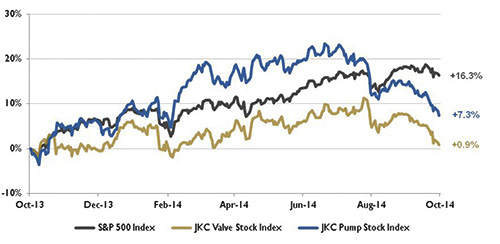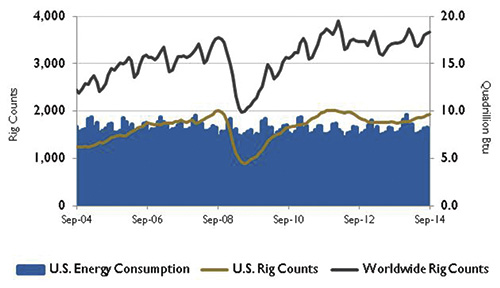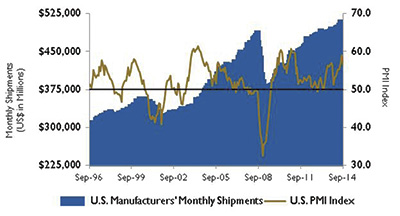The Jordan, Knauff & Company (JKC) Valve Stock Index was up 0.9 percent during the last 12 months, much lower than the broader S&P 500 Index, which was up 16.3 percent. The JKC Pump Stock Index was up 7.3 percent for the same time period.1 Although the Institute for Supply Management’s Purchasing Managers’ Index (PMI) decreased 2.4 percent in September to a reading of 56.6 percent, the survey shows continued expansion in the U.S. manufacturing sector and indicates continued overall economic growth. The Production Index was slightly stronger than August at 64.6 percent. New orders slowed to 60 percent from 66.7 percent, but the index has remained in expansion mode for 16 straight months. New orders increased in 12 of 14 industries with growth in chemicals, transportation equipment, paper and fabricated metals.
 Figure 1. Stock indices from Oct. 1, 2013, to Sept. 30, 2014
Figure 1. Stock indices from Oct. 1, 2013, to Sept. 30, 2014 Figure 2. U.S. energy consumption and rig counts
Figure 2. U.S. energy consumption and rig counts Figure 3. U.S. PMI and manufacturing shipments
Figure 3. U.S. PMI and manufacturing shipments
